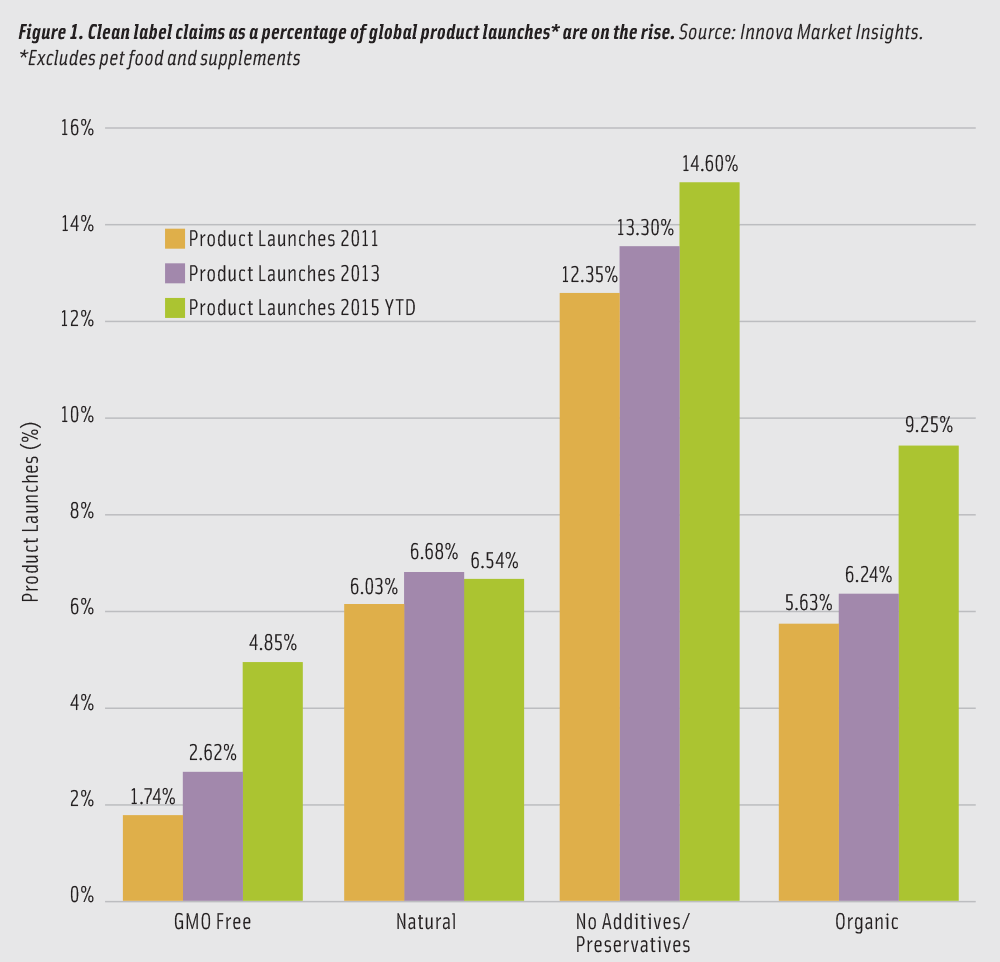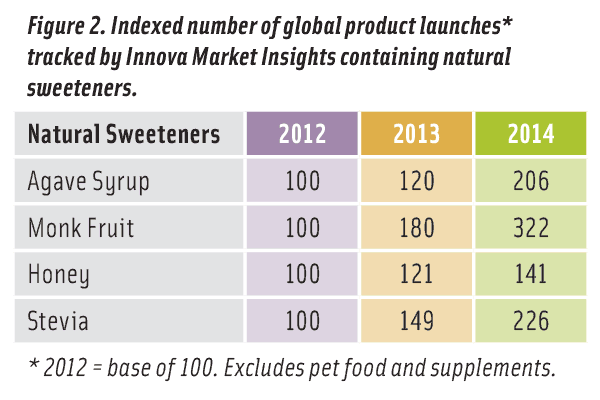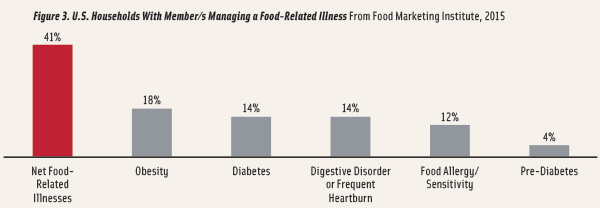Formulating for Clean Label Products
Accelerating consumer interest in ‘natural’ and clean label has shifted the focus of product development and ingredient selection to natural sweeteners, greens and grasses, ancient grains, and non-GMO varieties.
Article Content
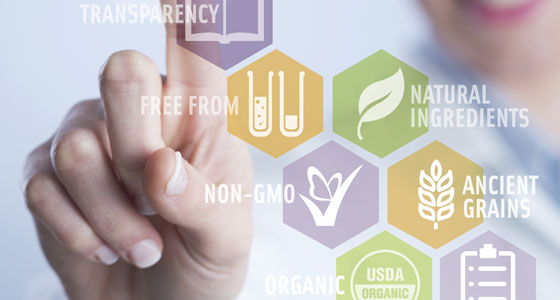
Five years ago, Innova Market Insights first identified interest in natural and clean-label options as one of its Top Trends for 2011 and despite concerns over the definition and use of the term “natural” in some quarters, the growth in products marketed on a natural or clean-label platform has continued relatively unabated (Figure 1). Over 23% of total global new product launches recorded by Innova Market Insights in the 12 months ending Aug. 2015 used one or more claims relating to naturalness, freedom from additives and preservatives, or organic certification—up from 19% two years previously and 17% two years before that. This 23% share rises to over 30% in the United States.
The natural and clean label trend has had a radical and ongoing effect on ingredient use in the industry, with efforts directed towards clean labeling and the use of all-natural or predominantly natural formulations wherever possible. As a result, natural ingredients are increasingly in demand, resulting in the arrival of new options in some instances and the revival and updating of some established products in others.
Natural Sweeteners
The rising popularity of natural sweeteners (Figure 2) has been strongly in evidence in recent years, as exemplified by the growing use of stevia. In combining calorie, particularly sugar, reduction with naturalness, the expanding regulatory approval for stevia sweeteners in markets such as the U.S., Australia, and then the EU over the past five years or so has caused something of a revolution in sweetener use. Penetration, however, has not proceeded as fast as expected in some instances. The U.S. has seen the best take-up in terms of product activity in recent years, accounting for around 75% of global launches featuring stevia in the 52 weeks ending Aug. 2015.
While stevia-sweetened lines are being introduced across a range of food and drink sectors, new product launches appear to be focusing strongly around soft drinks and sports nutrition products, which accounted for a combined 55% of global launches using stevia.
In the soft drinks market, stevia is now being used by some leading players and brands. One of the most significant launches for stevia was almost certainly Coca-Cola’s introduction of its first stevia-sweetened cola with Coca-Cola Life in Argentina in 2013. The product featured a striking green label rather than Coca-Cola’s trademark red. It was sweetened with sugar and stevia and had 108 calories per 600-ml bottle, positioning it between classic Coke with 250 calories and zero-calorie Diet Coke. After some regional testing, Coca-Cola Life was also rolled out nationwide in the U.S. in Nov. 2014, following its launch in the UK in Aug. Launches in a number of other European and global markets followed.
Rival PepsiCo responded with its own product, Pepsi True, also sweetened with stevia. It is currently being rolled out in test markets in the U.S., having previously been sold only via the Internet. It has 30% fewer calories than regular Pepsi, again targeting the U.S. mid-calorie sector. Other carbonated launches have included Royal Crown’s RC Neo mid-calorie cola line sweetened with stevia, as well as zero-calorie products such as Zevia, reformulated in 2014 with a new sweetener blend of stevia, monk fruit, and erythritol and subsequently extended with a Tonic Water variant.
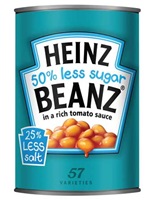 Other interesting stevia-sweetened introductions have included Yoatz yogurt and oat blends in the U.S., sweetened with honey and stevia; 50% Less Sugar Beanz from Heinz in the UK, launched in 2015 to replace the Reduced Sugar & Salt variant, using stevia to cut the sugar content, just as it did with its 50% Less Sugar Ketchup; Beauty and Go beauty drinks from AMC Innova in Spain sweetened with stevia leaf; and Fresh mints with stevia from Powerfresh, available in a number of European markets.
Other interesting stevia-sweetened introductions have included Yoatz yogurt and oat blends in the U.S., sweetened with honey and stevia; 50% Less Sugar Beanz from Heinz in the UK, launched in 2015 to replace the Reduced Sugar & Salt variant, using stevia to cut the sugar content, just as it did with its 50% Less Sugar Ketchup; Beauty and Go beauty drinks from AMC Innova in Spain sweetened with stevia leaf; and Fresh mints with stevia from Powerfresh, available in a number of European markets.
Other natural sweeteners are also increasingly being used in the focus on naturalness, often in combination with sugar, stevia, and/or other sweeteners such as erythritol. Honey and agave are proving particularly popular, and there is also growing interest in the use of monk fruit. Chobani’s Simply 100 Greek yogurt range, for example, is sweetened with a blend of stevia, monk fruit, and evaporated cane juice, while Yoplait’s Yogurt & Juice blends use monk fruit and stevia as natural sweeteners.
Back To Basics
Interest in naturally nutritious ingredients and a return to basics have also led to increasing consumption of ancient grains and green foods, including green vegetables such as kale, as well as grasses and seaweed (Figure 3).
Kale is part of the Brassica family of vegetables and is currently rising high in markets such as the U.S. and the UK. While a traditional vegetable of long-standing in many parts of the world, including Europe, Africa and China, it declined in popularity as a wider range of alternatives started to appear. More recently, rising interest in healthy eating and winter-time availability have regenerated interest in its use, with its nutritional benefits and eye-catching colorful appearance attracting a whole new range of consumers.
Consequently, the use of kale in a wide range of packaged food and drink products has also risen markedly in recent years, with a consistent increase in launch activity recorded by Innova Market Insights. The total number of global introductions rose four-fold over the 2009 to 2014 period, with a further significant double-digit rise in 2015. Activity has been particularly strong in juice drinks and smoothies, as well in as soups, ready meals, and snacks.
Wheatgrass, long available in health food stores and specialist outlets in juice and powder/concentrate format, has also now started to develop a place in the mainstream food and drinks market. It is increasingly being used as an ingredient in supplements and in food and drink products, often in combination with other components with a healthy image or perceived health benefits.
Wheatgrass is the young grass of the wheat plant Triticum aestivum. It can also be traced back in history for thousands of years and is associated with a raft of health benefits through supplemental nutrition to unique curative properties. Virtually all of these claims remain scientifically unproven, although it is recognized as a good source of potassium, dietary fiber, and a range of vitamins and minerals.
According to Innova Market Insights data, global launches of food and drink products containing wheatgrass saw a double-digit increase in the 12 months ending Feb. 2015 and have more than doubled over the past two years. Europe and North America had the highest launch numbers over the past year, with Europe accounting for 55% of the total and North America a further third, led by the UK and the U.S.
 Perhaps more significant, however, is the move away from supplement-type products and into mainstream food and drinks, which accounted for 40% of launches featuring wheatgrass recorded over the past year. Soft drink products, primarily juice drinks and smoothies, accounted for half of this total, with some activity also evident in snacks, ready meals and dairy beverages.
Perhaps more significant, however, is the move away from supplement-type products and into mainstream food and drinks, which accounted for 40% of launches featuring wheatgrass recorded over the past year. Soft drink products, primarily juice drinks and smoothies, accounted for half of this total, with some activity also evident in snacks, ready meals and dairy beverages.
Supplements featuring wheatgrass have been launched in a range of formats for many types of applications, including children’s and men’s supplements, meal replacements, and sports and performance lines. Trends in product activity in this market sector may also indicate the next development in this area, with some interest in supplements featuring combinations with other grasses, perhaps most notably barley and oat grasses, as well as a whole host of other green ingredients such as chlorella, spirulina, alfalfa, and hemp, as well as more standard green vegetable extracts.
Ancient grains, such as chia, buckwheat, quinoa, hemp, and amaranth, were also once very popular basic food cereals, but faded away and became largely obsolete in many countries with the rise of modern cereal crops, such as wheat and corn. Their resurgence reflects rising levels of interest in alternative grain products that are positioned as traditional, natural, and nutritious, with the additional benefit that some can also be used in gluten-free formulations. According to Innova Market Insights data, the number of products containing these grains has generally been rising markedly over the past decade, led by interest in quinoa and, more recently, chia.
Quinoa is a small, light-colored round grain with a distinctive nutty earthy flavor and is indigenous to South America, where the Incas regarded it as the “mother of all grains”. A staple in some grain-based foods, including breakfast cereals, snack bars, and biscuits, quinoa is now also being used in confectionery, beverages, ready meals, and baby foods.
Chia is a Latin American annual herb high in protein, dietary fiber, and antioxidants, with a high concentration of omega-3 fatty acids in its oil. Launches featuring chia as an ingredient range across a number of sectors, but are being led by cereal products, including breakfast cereals and cereal bars. Activity is also strong in bakery products, supplements, and sports nutrition lines, with interest also apparent in ready meals, sauces and seasonings, dairy products, baby foods, and soft drinks.
Perhaps most significant for ancient grains, however, has been the move more squarely into the mainstream with Kellogg’s U.S. launch of its Special K Nourish multigrain cereals and cereal bars made with quinoa in combination with oats, barley, and wheat, which it followed in 2015 with the introduction of Ancient Grains Blend and two Ancient Grains Granolas as part of its new Origins line, marketed as made with simple ingredients.
Other cereal companies have followed suit, including Quaker with its Super Grains Oatmeal Blends, launched in early 2015 and featuring quinoa and flax, as well as oats, wheat, barley, and rye. Meanwhile, General Mills introduced a new variant of its market-leading Cheerios cereal brand featuring ancient grains, including quinoa, spelt, and kamut.
Activity is also in evidence internationally, with recent introductions including Lean Cuisine Whole Grains frozen meals featuring quinoa in Australia; a CHIAktiv extension to Lieken Urkorn’s Fit & Aktiv wellness bread range with chia seeds and millet in Germany; and Basmati & Quinoa wholegrain rice from Tilda and Burgen Sunflower & Chia seed bread from Allied Bakeries, both in the UK.
Another development indicating interest in returning to the eating habits of our ancestors, perceived to be simpler and more natural, is the rise of the so-called Paleo Diet as a weight-loss regime. It has grown to achieve almost cult status, particularly in the U.S., since its revival in the early 2000s. The diet takes us back to eating the way our Stone Age ancestors would have eaten 10,000 years ago, prior to agriculture and farming, with a diet of lean meat, nuts, fruit and vegetables, with no access to grains, legumes, dairy products, and foods high in refined sugar and salt.
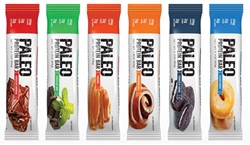 When looking at use of the word “paleo” in launch activity tracked by Innova Market Insights, a huge surge has occurred over the past five years, from single figures in 2010 to over 200 products in the 12 months ending July 2015. Although paleo remains very small in terms of global launch activity totals, it is nearly double the number recorded in 2014 and much more significant in the U.S., which accounted for over 80% of the global total. The leading product categories included cereals, bakery products, and snacks. Recent launches include products such as Paleo Cookies and Paleo Protein Bars from Julian Bakery, Paleopure Trail Mix from Paleopure, and Steve’s PaleoGoods’ Paleocrunch Granola and Paleobars, all in the U.S.
When looking at use of the word “paleo” in launch activity tracked by Innova Market Insights, a huge surge has occurred over the past five years, from single figures in 2010 to over 200 products in the 12 months ending July 2015. Although paleo remains very small in terms of global launch activity totals, it is nearly double the number recorded in 2014 and much more significant in the U.S., which accounted for over 80% of the global total. The leading product categories included cereals, bakery products, and snacks. Recent launches include products such as Paleo Cookies and Paleo Protein Bars from Julian Bakery, Paleopure Trail Mix from Paleopure, and Steve’s PaleoGoods’ Paleocrunch Granola and Paleobars, all in the U.S.
With ongoing interest in clean labeling and greater transparency, the free-from category is continuing to grow globally and, in addition to high-profile developments in areas such as lactose- and dairy-free and gluten-free foods and drinks, there has also been a marked upturn in interest in GMO-free or non-GMO products.
GMO-Free and Non-GMO
The use of genetic modification (GM) has become an issue in recent years in the U.S., in particular, where there has traditionally been only limited consumer resistance to GM foods. While GM foods have to be labeled in other parts of the world, notably including the EU, this has not been the case in the U.S. to date. After rising levels of concern, the growing use of GMO-free labeling, and the development of schemes such as Non-GMO Project Verification, some U.S. states are starting to discuss introducing their own legislation.
In terms of product activity, launches featuring GMO-free claims and labeling remain relatively limited on a global scale. While over 13% of launches recorded by Innova Market Insights in the 12 months ending Aug. 2015 were marketed on an additive-free or preservative-free platform, 8% were presented as organic and over 6% as natural, just 4% used non-GMO or GMO-free labeling, although this was still a significant rise year-on-year, driven mainly by rising levels of interest in the U.S. Over the 12-mo period, the U.S. accounted for 43% of global launches using GMO-free claims, moving ahead of the EU at 40%, despite the significant number of countries involved in the latter region.
The use of GMO-free claims in the U.S. reached nearly 11% of total food and drink introductions, with snacks and cereals leading in terms of numbers, reflecting the significance of GM ingredients using high levels of cereals for food. While snacks had the highest number of GMO-free introductions overall in the U.S., cereals led in terms of share, with over 34% of introductions of breakfast cereals and cereal bars featuring this type of labeling, compared with just under 25% for snacks.
As a result of growing consumer concerns over the issue, pressure for the right to choose non-GMO products resulted in the rise of GMO-free claims, the development of a non-GMO movement, and schemes such as the Non-GMO Project Verified label, launched in the U.S. in 2008 as a non-profit collaboration to ensure the sustained availability of non-GMO food and drink choices. It is reported that over 30,000 products have now been verified and that sales of products using the Non-GMO Project Verified label have reached over $12 billion, up massively from about 5,000 products with sales of $1.2 billion in 2011.
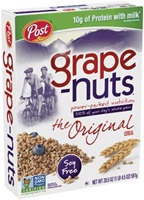 The move of non-GMO foods into the mainstream in the U.S. has largely taken place since 2013 and followed a number of developments, including the decision by the Whole Foods Market retail chain, announced in 2013, to require GM ingredient labeling for all products sold in its stores by 2018; the commitment by Ben & Jerry’s Ice Cream to removing GM ingredients by mid-2014; and the announcement of Chipotle Mexican Grill to eliminate GM ingredients in foods in its restaurants. This was followed in early 2014 with the move of two mainstream breakfast cereals brands to non-GMO status—General Mills’ Cheerios and Post’s Grape-Nuts.
The move of non-GMO foods into the mainstream in the U.S. has largely taken place since 2013 and followed a number of developments, including the decision by the Whole Foods Market retail chain, announced in 2013, to require GM ingredient labeling for all products sold in its stores by 2018; the commitment by Ben & Jerry’s Ice Cream to removing GM ingredients by mid-2014; and the announcement of Chipotle Mexican Grill to eliminate GM ingredients in foods in its restaurants. This was followed in early 2014 with the move of two mainstream breakfast cereals brands to non-GMO status—General Mills’ Cheerios and Post’s Grape-Nuts.
There has also been relatively strong interest in non-GMO labeling in the dairy industry, where a natural image has traditionally been important, and growing interest has led to ongoing activity in organic and pasture milks. There is a strong link between organic dairy lines and non-GMO certification, with many products using both types of positioning, including some leading organic dairy producers such as Stonyfield Farm and Organic Valley, as well as nondairy drink lines such as Blue Diamond’s Almond Breeze and White Wave’s Silk. The leading U.S. Greek yogurt brand Chobani is also certified as non-GMO, doing this in conjunction with the Eurofins food testing organization and its product labeling reflects this.
Dairy products have been one of the key areas for non-GMO or GMO-free labeling in Europe, where, despite compulsory EU regulations on labeling of genetically-modified foods having been in force since the 1990s, there has still been ongoing pressure to verify and more easily identify GMO-free food and drinks. This has been led by countries such as Germany and Austria.
Austria has seen particular development in the use of GMO-free labeling for dairy products, which is not surprising in light of its ongoing interest in marketing the purity of its dairy products. Many of its pasture milk products (more often called Heumilch or hay milk in Austria) are being launched and marketed in conjunction with other product benefits, perhaps most notably as being GMO-free. Production of pasture milk reached 430 million kg in 2014, equivalent to 16% of total output, with organic lines making up 25% of the total.
Dairy launches using a GMO-free logo accounted for 27% of total Austrian dairy introductions recorded by Innova Market Insights in the 12 months ending May 2015, compared with 3.3% in the EU as a whole, 5% globally, and 10% in the U.S.
Greater Transparency in Labeling
In the U.S., 75% of consumers claim to read the nutritional and ingredient labels of food products, but while they may increasingly want to understand what they eat, research by HealthFocus International in 2014 indicated that 27% of consumers did not understand most on-pack symbols and claims. This is being addressed by regulators with new laws pushing the disclosure of additional information and greater transparency, as well as by companies themselves with voluntary initiatives such as Facts Up Front in the U.S. and traffic light labeling in the UK driving more prominent front-of-pack nutrition facts.
“From Clean to Clear Label” was identified by Innova Market Insights as the No. 1 trend in its Top 10 Trends for 2015, recognizing that it is no longer a niche area for the food and beverage industry. This demand for clean labeling has now brought the need for clear labeling equally to the fore, resulting in a move to clearer and simpler claims and packaging for maximum transparency and necessitating an industry response in terms of reformulation and new communication strategies.
Clean labeling has moved beyond being a trend and is now regarded as more or less standard in the food industry, with consumers demanding shorter and more recognizable ingredients lists and manufacturers responding by increasingly highlighting the naturalness and origins of their products. With growing concerns over the lack of a definition of natural, however, there is a need for more clarity and specificity, with consumers, retailers, industry, and regulators all driving the demand for more transparency in food labeling.
Lu Ann Williams, a member of IFT, is Director of Innovation at Innova Market Insights, Duiven, The Netherlands
([email protected]).


